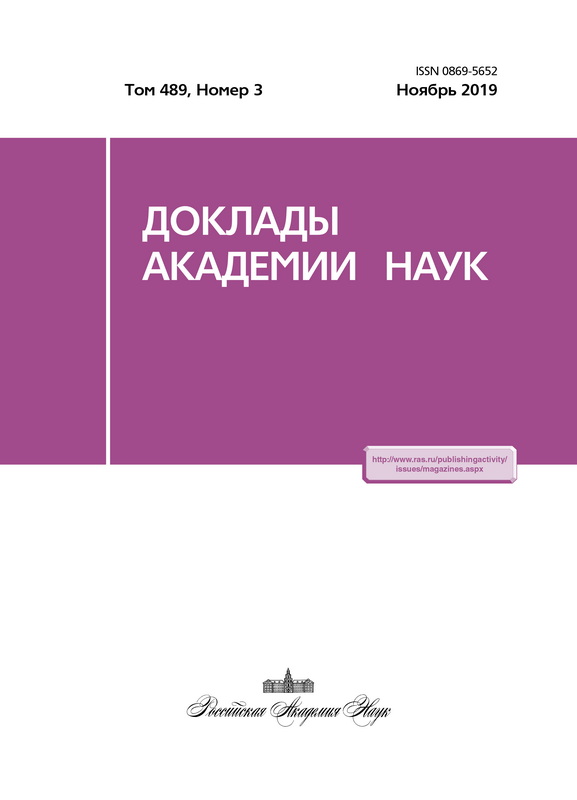Pyrogenic nature reservoir rocks as a factor of geofluidodynamic inhomogeneity
- Authors: Abukova L.A.1, Yusupova I.F.1
-
Affiliations:
- Oil and Gas Research Institute of the Russian Academy of Sciences
- Issue: Vol 489, No 3 (2019)
- Pages: 277-280
- Section: Geochemistry
- URL: https://journals.eco-vector.com/0869-5652/article/view/18593
- DOI: https://doi.org/10.31857/S0869-56524893277-280
- ID: 18593
Cite item
Abstract
The article considers the Kansko-Achinsky brown coal basin. Huge reserves of solid organic matter (OM) are concentrated in еру Jurassic age sandy-clay sediments. For example, the average thickness of the Borodino field Itatsky layer is 51 m. Attention is drawn to the paleo-centers of heat generation where the coal layers lost (in a whole or partly) their OM. They were destroyed by the underground fires of the past eras. The loss of large masses of the OM in local areas was accompanied by deformations of the coal layers (as well as overlapping ones), appearance of burned and caved ground, failure topographic form (subsidence, funnels, bolsons), and most importantly, the formation of epigenetic cavernosity and pyrogenic reservoir rocks. It is emphasized that the increased fluid conductivity of burned rocks has survived up to the present days. The areas with the burnt rocks are separated into independent fluid dynamic structures with their own parameters (filtration coefficient, water transmissibility, etc.). It has been suggested that pyrogenic reservoir rocks could occur in oil-and-gas basins with coal shale deposits at certain stages of geological development, and at the oil-and-gas generating depths they are able to become reservoirs of catagenic hydrocarbons.
About the authors
L. A. Abukova
Oil and Gas Research Institute of the Russian Academy of Sciences
Author for correspondence.
Email: abukova@ipng.ru
Russian Federation, 3, Gubkin Street, Moscow, 119333
I. F. Yusupova
Oil and Gas Research Institute of the Russian Academy of Sciences
Email: abukova@ipng.ru
Russian Federation, 3, Gubkin Street, Moscow, 119333
References
- Угольная база России. Т. III. Угольные бассейны и месторождения Восточной Сибири (южная часть) / Под ред. В.С. Быкодорова, В.Ф. Череповского. М.: Геоинформцентр, 2002. 488 с.
- Гаврилин К.В., Озерский А.Ю. Канско-Ачинский угольный бассейн. М.: Недра, 1996. 272 с.
- Ольховатенко В.Е., Пуляев В.Н., Сенотрусов Г.П. и др. Инженерная геология угольных месторождений Сибири и Дальнего Востока. Томск: Изд-во Томс. ун-та, 1991. 288 с.
- Сокол Э.В., Максимова Н.В., Нигматулина Е.Н., Шарыгин В.В., Калугин В.М. Пирогенный метаморфизм. Новосибирск: Наука, 2005. 284 с.
- Калугин И.А., Третьяков Г.А., Бобров В.А. Железорудные базальты в горелых породах Восточного Казахстана. Новосибирск: Наука, 1991. 80 с.
- Юсупова И.Ф. // ДАН. 1992. Т. 324. № 5. С. 1085.
- Юсупова И.Ф. // Химия тв. тела. 2011. № 6. С. 65.
- Kus. J. // Int. J. Coal Geol. 2017. V. 171. P. 185.
- Stracher G.B. The Rising Global Interest in Coal Fires: Earth. 2010. V. 55. № 9. P. 46.
- Сыроватко М.В. Гидрогеология и инженерная геология при освоении угольных месторождений. М.: Госгортехиздат, 1960. 500 с.
- Абукова Л.А., Юсупова И.Ф. Фундаментальные и прикладные вопросы гидрогеологии нефтегазоносных бассейнов. М.: ГЕОС, 2015. С. 19.
- Юсупова И.Ф., Абукова Л.А. // Химия тв. тела. 2017. № 4. С. 24.
- Юсупова И.Ф. // ДАН. 1994. Т. 335. № 3. С. 352.
- Астахов А.В., Винокурова Е.Б., Кецлах А.И. // ДАН. 1987. Т. 294. № 3. С. 626.
- Шумилов В.А., Аксельрод С.М., Шумилов А.В. Геофизические исследования скважин при разведке и добыче метана угольных пластов. Пермь: Перм. гос. нац. исслед. ун-т, 2015. 148 с.
Supplementary files







